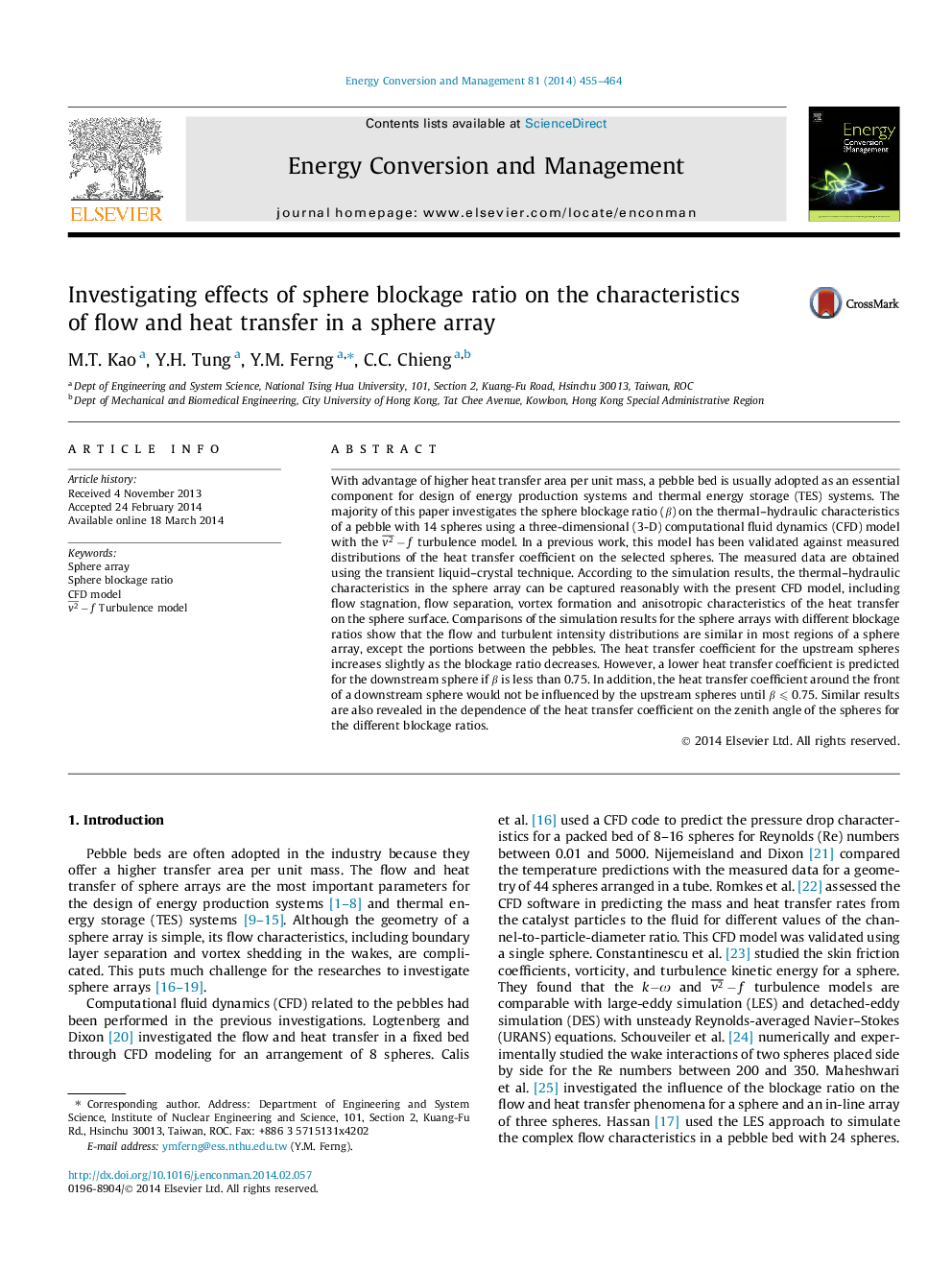| کد مقاله | کد نشریه | سال انتشار | مقاله انگلیسی | نسخه تمام متن |
|---|---|---|---|---|
| 763989 | 1462881 | 2014 | 10 صفحه PDF | دانلود رایگان |
• This paper is to study the heat transfer coefficient on spheres in a 3-D array.
• Transient liquid crystal technique is used to measure temperature distributions.
• A 3-D transient CFD model with different turbulence models is also developed.
• v2‾-f Turbulence model is shown to be more suitable for simulating pebble arrangement.
• Beneficial effect of Rein on heat transfer for pebbles is shown in test and model.
With advantage of higher heat transfer area per unit mass, a pebble bed is usually adopted as an essential component for design of energy production systems and thermal energy storage (TES) systems. The majority of this paper investigates the sphere blockage ratio (β ) on the thermal–hydraulic characteristics of a pebble with 14 spheres using a three-dimensional (3-D) computational fluid dynamics (CFD) model with the v2‾-f turbulence model. In a previous work, this model has been validated against measured distributions of the heat transfer coefficient on the selected spheres. The measured data are obtained using the transient liquid–crystal technique. According to the simulation results, the thermal–hydraulic characteristics in the sphere array can be captured reasonably with the present CFD model, including flow stagnation, flow separation, vortex formation and anisotropic characteristics of the heat transfer on the sphere surface. Comparisons of the simulation results for the sphere arrays with different blockage ratios show that the flow and turbulent intensity distributions are similar in most regions of a sphere array, except the portions between the pebbles. The heat transfer coefficient for the upstream spheres increases slightly as the blockage ratio decreases. However, a lower heat transfer coefficient is predicted for the downstream sphere if β is less than 0.75. In addition, the heat transfer coefficient around the front of a downstream sphere would not be influenced by the upstream spheres until β⩽0.75β⩽0.75. Similar results are also revealed in the dependence of the heat transfer coefficient on the zenith angle of the spheres for the different blockage ratios.
Journal: Energy Conversion and Management - Volume 81, May 2014, Pages 455–464
